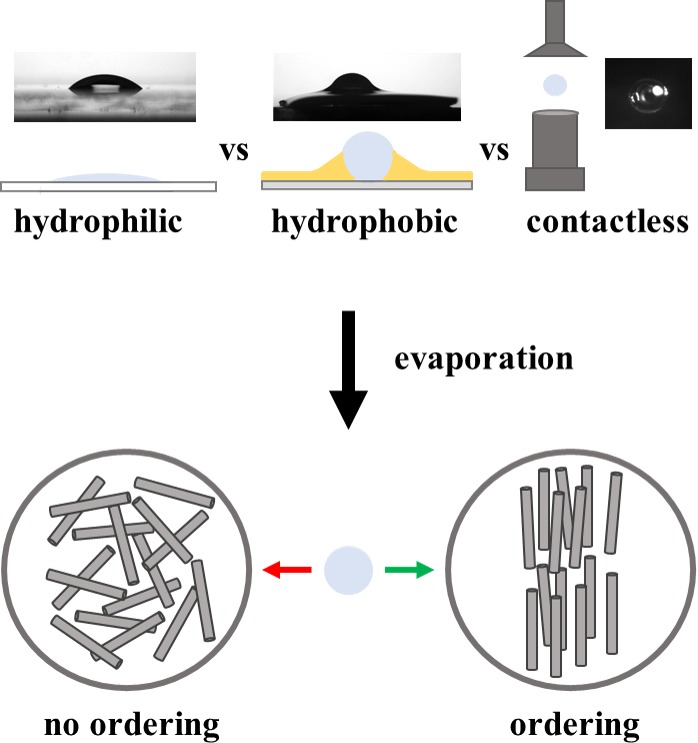First results on the use of accoustic levitation published
 |
17/10/2024. See article in open access here: https://onlinelibrary.wiley.com/doi/full/10.1002/admi.202400323 Highlight on the LPS website: https://equipes2.lps.u-psud.fr/matrix/droplet-levitation-for-self-assembly-of-liquid-crystals/ Highlight on SOLEIL website: https://www.synchrotron-soleil.fr/fr/actualites/levitation-de-gouttes-pour-lauto-assemblage-de-cristaux-liquides Evaporation-induced self-assembly (EISA) is a versatile method for generating organized superstructures from colloidal particles, offering diverse design possibilities through the manipulation of colloid size, shape, substrate nature, and environmental conditions. While some work highlighted the potential of EISA to investigate phase transitions of inorganic liquid crystals, the influence of sample environment to determine their phase diagrams is often overlooked. In this work, we compare the self-assembly of lyotropic liquid crystals by EISA on hydrophilic or hydrophobic substrates, and by acoustic levitation (absence of substrate). We focus on imogolite nanotubes, a model colloidal system of 1D charged objects, due to their tunable morphology and rich liquid-crystalline phase behavior. We demonstrate the feasibility to obtain phase transitions in levitating droplets and on hydrophobic substrate, whereas self-assembly was limited on hydrophilic supports. Moreover, the aspect ratio of the nanotubes proves to be a pivotal factor, influencing both transitions and the resulting materials shape and surface. Besides material shaping, acoustic levitation emerges as a promising method for studying phase transitions by EISA, toward the rapid establishment of phase diagrams from diluted to highly concentrated states using a limited volume of sample. |